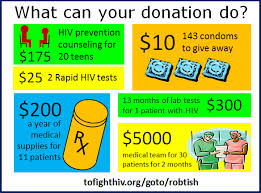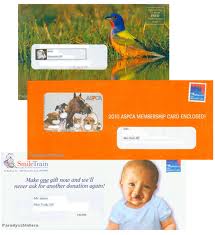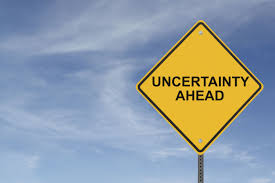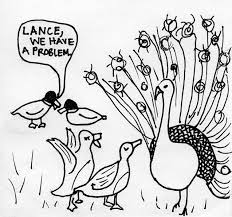 Many years ago I traveled the Midwest region as an internal consultant working for a large national non-profit organization. For part of my time there, I worked with countless local affiliated organizations on planning and implementing an annual campaign focused on face-to-face solicitation strategy. Some agencies took to it like a duck to water, and others just struggled. Every once in a while (typically when I’m contemplating the origins of the universe), I think back to those days and wonder what the difference was between those two realities.
Many years ago I traveled the Midwest region as an internal consultant working for a large national non-profit organization. For part of my time there, I worked with countless local affiliated organizations on planning and implementing an annual campaign focused on face-to-face solicitation strategy. Some agencies took to it like a duck to water, and others just struggled. Every once in a while (typically when I’m contemplating the origins of the universe), I think back to those days and wonder what the difference was between those two realities.
Whenever I get into one of those “WHY?” moods, I’ve concluded that differences in the following factors must be what made the difference:
- resource development skill sets
- state of donor donor readiness
- board of directors
- community factors
While I am sure all of these things play a role, I think it might be even more simple.
This morning I was enjoying my coffee and reading a book when I came across the following passages from the book “The Magic of Thinking Big” written by David Schwartz:
“Desire, when harnessed is power.”
“Success required heart and soul effort and you can only put your heart and soul into something you really desire.”
“When you surrender yourself to your desires, when you let yourself become obsessed with a goal, you receive the physical power, energy, and enthusiasm needed to accomplish your goal. But you receive something else, something equally valuable. You receive the ‘automatic instrumentation’ needed to keep you going straight to your objective.”
While I’ve always believed in the power of goal setting, I guess I’ve never seen it in this light or from this perspective.
So, the answer to my original question very likely is simple . . . those who succeeded just desired it more and those that didn’t do well didn’t.
I guess this is why successful fundraising professionals are focused on measurable goals such as:
- campaign and event contribution goals
- sponsorship goals
- grant writing goals
- donor retention goals
- new donor acquisition goals
These goals are encapsulated in strategic plans, fundraising plans, stewardship plans, major gift prospect cultivation plans, annual performance plans, etc.
What type of fundraising-related goals does your organization have? Where are those goals written down? How do those goals get translated into your individual goals and where are those written? Were those goals developed collaboratively and do they align with what you’re passionate about? If not, how do you bridge that gap in order to avoid failure?
Please scroll down and share your thoughts and experiences in the comment box below.
Here’s to your health!
Erik Anderson
Founder & President, The Healthy Non-Profit LLC
www.thehealthynonprofit.com
erik@thehealthynonprofit.com
http://twitter.com/#!/eanderson847
http://www.facebook.com/eanderson847
http://www.linkedin.com/in/erikanderson847

 I have a confession to make. For years, one of the ideas I’ve shared with clients is that a postcard can be an effective stewardship strategy. The truth is that I’ve doubted the effectiveness of this strategy primarily because I had never seen it done well. Today, I’m able to say that I’ve seen the light and officially have become a believer thanks to my alma mater — University of Illinois (UIUC).
I have a confession to make. For years, one of the ideas I’ve shared with clients is that a postcard can be an effective stewardship strategy. The truth is that I’ve doubted the effectiveness of this strategy primarily because I had never seen it done well. Today, I’m able to say that I’ve seen the light and officially have become a believer thanks to my alma mater — University of Illinois (UIUC).

 Last week I was walking our dog, Betrys, when I came across a lemonade stand in my neighborhood. A mom was helping her two young sons set-up as I approached. It was in that moment that the 3-year-old boy learned a valuable lesson that every fundraising professional learns sooner or later in their career. So, I decided to take a minute to blog about it this morning.
Last week I was walking our dog, Betrys, when I came across a lemonade stand in my neighborhood. A mom was helping her two young sons set-up as I approached. It was in that moment that the 3-year-old boy learned a valuable lesson that every fundraising professional learns sooner or later in their career. So, I decided to take a minute to blog about it this morning. Our job as fundraisers is to understand the rules of engagement when it comes to fundraising:
Our job as fundraisers is to understand the rules of engagement when it comes to fundraising: On Tuesday, I wrote a post titled “
On Tuesday, I wrote a post titled “ What if your spouse or friend approached you and said, “I am really hungry and I need you get me food and make a meal before I starve.” However, they didn’t tell you:
What if your spouse or friend approached you and said, “I am really hungry and I need you get me food and make a meal before I starve.” However, they didn’t tell you: A few observations:
A few observations: A client called and asked for a little help with their upcoming direct mail solicitation. As a result, all I’ve had on my mind over the last few days is direct mail. So, it only made sense to blog about it today. I’m breaking this post down into small sections, and I’m doing so in the order of highest importance (e.g. the first section has a bigger impact on the performance of your mailing than the second section, etc)
A client called and asked for a little help with their upcoming direct mail solicitation. As a result, all I’ve had on my mind over the last few days is direct mail. So, it only made sense to blog about it today. I’m breaking this post down into small sections, and I’m doing so in the order of highest importance (e.g. the first section has a bigger impact on the performance of your mailing than the second section, etc) Perhaps, the biggest factor in the success of your direct mail appeal is your mailing list. The following are just a few donor segments that I’ve mailed to throughout the years:
Perhaps, the biggest factor in the success of your direct mail appeal is your mailing list. The following are just a few donor segments that I’ve mailed to throughout the years: Your beautifully crafted letter means nothing if the recipient of your mailing doesn’t open the envelope. Right?
Your beautifully crafted letter means nothing if the recipient of your mailing doesn’t open the envelope. Right? Haha! You thought I was going to start with something like, “And God said, ‘Let there be light,’ and there was light.” (OK, the thought went through my head. Guilty as charged!)
Haha! You thought I was going to start with something like, “And God said, ‘Let there be light,’ and there was light.” (OK, the thought went through my head. Guilty as charged!) He who seeks finds
He who seeks finds Give to him who asks of you
Give to him who asks of you Craig Linton, blogger at
Craig Linton, blogger at  Acknowledgement letters, emails, phone calls and gifts
Acknowledgement letters, emails, phone calls and gifts Inviting donors to take a tour
Inviting donors to take a tour Send chocolate covered strawberries
Send chocolate covered strawberries “I laughed at the Lorax, “You poor stupid guy!
“I laughed at the Lorax, “You poor stupid guy! Other stewardship activities definitely get you a little closer to building that relationship and understanding your donors’ rationale for making a charitable contribution:
Other stewardship activities definitely get you a little closer to building that relationship and understanding your donors’ rationale for making a charitable contribution: I believe it is a basic truism that you can’t make people do anything they don’t want to do. Every example I can think of ends up not working.
I believe it is a basic truism that you can’t make people do anything they don’t want to do. Every example I can think of ends up not working. Board Development
Board Development Resource Development Plan
Resource Development Plan This entire week we’ve been looking back upon 2011 for major trends, and then looking forward to 2012 with an eye towards making a few predictions. Today’s post speaks to a fundraising prediction that has been true every year since the birth of our country more than 235 years ago:
This entire week we’ve been looking back upon 2011 for major trends, and then looking forward to 2012 with an eye towards making a few predictions. Today’s post speaks to a fundraising prediction that has been true every year since the birth of our country more than 235 years ago: